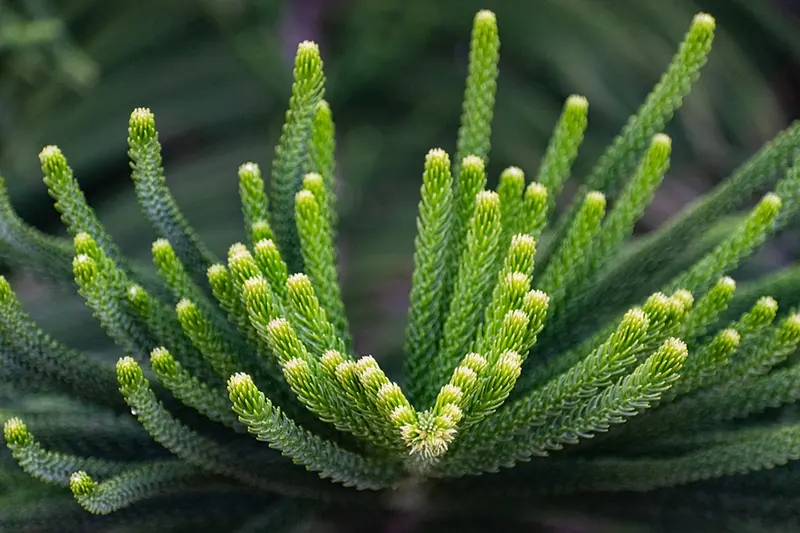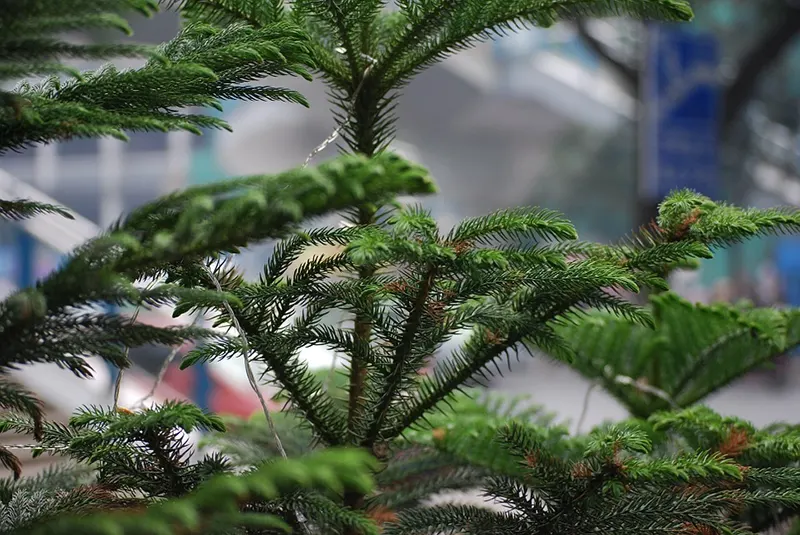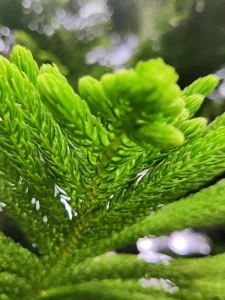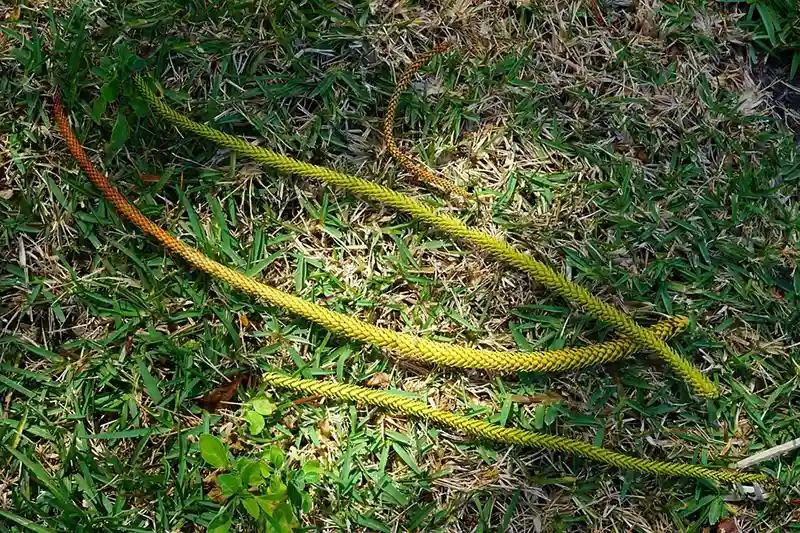Norfolk Island Pine Bonsai Care
Araucaria heterophylla
Such wonder and splendor await those that grow a Norfolk Island Pine bonsai. It’s native to Northfolk Island, nearby Australia, from which it receives its name. Other names for it include Christmas pine or star tree. It’s unique in appearance, as few conifers have the same needles forms and branch designs.
Despite its name, it’s not actually a true pine. It may be in the Pine order, but not in the family. It has its own family called Araucariaceae, relating back to conifers from ancient times. Most of its relatives were wiped out during the Cretaceous–Paleogene extinction event that also saw the end of the dinosaurs.
Here’s what you’ll find in our Norfolk Island Pine Bonsai species guide:
Here’s what you’ll find in our Norfolk Island Pine Bonsai species guide:
01
02
03
04
05
Quick Norfolk Island Pine Bonsai Care Sheet
For a quick summary of the basics to care for your Norfolk Island Pine Bonsai, see the care sheet below.
Recommended soil
Use a standard mix with pebbles as a base layer for drainage
Watering
Every two days in spring and summer, or until the top layer of soil is dry. Reduce in autumn and winter.
Potting season
Every two to four years based on age, early spring before new growth appears
Shaping and pruning season
Heavy maintenance is not recommended; pinch back buds to stop or remove growth
Light
Full or partial sun for three hours every day; turn the pot every week to develop even growth
Fertilizing
Water-soluble 20-20-20 fertilizer once a week in spring and summer only
Propagation methods
By seed or cutting
Pests and diseases
Leaf spot, mold, scales
Growth patterns
Grows tall instead of wide, and leaves tend to die lower down as the tree matures
Recommended styles
Formal and informal upright, slanted, twin trunks, forest
Scientific Classification
- Kingdom: Plantae
- Clade: Gymnosperms
- Division: Pinophyta
- Class: Pinopsida
- Order: Pinales
- Family: Araucariaceae
- Genus: Araucaria
- Species: A. heterophylla

How to Care for a Norfolk Island Pine Bonsai
Now that the introduction is out of the way, it’s time to show you all the elements you’ll need to focus on when caring for the Norfolk Island Pine bonsai. There’s specific information to pay attention to so that your small tree has the best care it can receive.
If you’re looking for more general details, be sure to check our ultimate guide on bonsai tree care.
Best Soil
Any standard bonsai mix is perfect for the Norfolk Island Pine bonsai. It isn’t too fussy about the contents, but you may want to steer towards a more acidic pH level. Fortunately, the needles that fall from the tree will decompose and add to the acidity in the soil.
We recommend you add a layer of pumice or perlite at the bottom of the pot. It will help with the drainage and ensure that the roots don’t remain wet for too long.
Watering
The Norfolk Island Pine bonsai loves water, especially in the warmer months. However, you don’t want to water the tender roots daily. Also, it can be bad if you let the soil dry out. The best solution is to drown the pot and soil in a tub for about 30 mins and then let the water drain away. You can do this once a week while checking that the soil doesn’t become too dry.
When winter arrives, it won’t be as thirsty. You can lightly water once every week or two weeks. As long as there’s humidity, it shouldn’t dry out too quickly. Feel the top two inches of soil to see if there’s any moisture.
Repotting
Since the Norfolk Island Pine bonsai doesn’t extend its roots too far down, you can easily use a shallow bonsai pot. Even when it reaches maturity, you won’t need to upgrade to a bigger pot unless you see there are excessive roots. You can prune some of the roots if there’s too much, but try not to trim too much of it away.
Since the roots don’t grow too quickly, you only need to repot every two years for younger trees and four years for older ones. The only factor to worry about is how tall your bonsai is so that you can make sure the pot is heavy enough to counter the tree’s weight.
Shaping and Pruning
When it comes to maintenance, the Norfolk Island Pine bonsai isn’t overly fond of it. If you cut back on a branch, the chances are that it might die. The best method to approach it is to pinch the stems and needles.
The bonsai tree is also not keen on wiring. The branches are thin and fragile, and it’s more likely to snap if you try to bend them too much. If you want to shape it a particular way, you may want to try the clip-and-grow technique.
Location and Sunlight
Like most conifers, the Norfolk Island Pine loves direct sunlight for a few hours in the morning. You can leave it outside or inside in the warmer months, as long as there’s a way for it to absorb light. To protect it from strong winds, many people keep them indoors.
It doesn’t handle cold temperatures or frost too well. That’s another reason why they’re best as indoor bonsais, especially in the winter. Should you want to keep them outside, it’s best to place them in a greenhouse to keep them warm.
Fertilizing
You can aim for a balanced fertilizer during spring and summer, such as NPK 20:20:20. It has high levels of all macronutrients, with none of them being higher than the other. Giving it more nitrogen isn’t known to improve the growth rate that much.
During autumn, you’ll want to slow down from once a week to once a month. Liquid fertilizer is better to regulate than a solid one. Don’t feed the Norfolk Island Pine bonsai at all during winter, as it needs to rest for the coming spring.
Propagation Methods
There are two ways you can propagate the Norfolk Island Pine into a bonsai. The easiest method is using fertile seeds. You can store them in a papery medium while misting until the roots appear. From there, simply place it in the soil and keep the humidity levels high. You can also place a bag over the pot.
Another way is via cuttings, but there is a lower chance of success. Branches tend to die when cut, and the roots don’t form as easily. However, you can place root hormone powder on the tip and then place the cutting in soil with a bag over the container. You should feel some resistance in a few weeks.
Pests and Diseases
The Norfolk Island Pine bonsai is resilient to most pests and diseases. The fungi you’ll have to watch out for the most are leaf spot, mold, and root rot. If you have a well-lit space with plenty of fresh air circulation, it shouldn’t present any issues.
The only pests known to bother this bonsai species are scales. Other insects don’t really have an interest in it, but it pays to check every now and again for small spider mites or ants attracted to the water.
Growth Patterns
The tree grows directly toward sunlight, which is why it aims for a tall spire with branches spread out towards the light. Once a week, turn the pot so you have even development on all sides. The last thing you want is one side to be longer than the other.
In the end, you’re looking for a pyramid shape like a Christmas tree. Leaves don’t grow too fast on this species, so you’ll have to be patient.
Recommended Styles
You may have seen tall Norfolk Island Pines by your local church or along avenues in the city. They act as good wind barriers while presenting a beautiful display. They naturally grow up in a spire to a tapered point like a pyramid. If you want a natural look, we recommend using the same example in a formal upright style. Don’t go for a literati bonsai, as it won’t look good with this tree.
Informal and slanting styles also work, but they won’t look as natural. If the trunk breaks during development, you can even get away with a twin trunk design. The cascade form doesn’t work at all with this species, but we highly recommend a bonsai forest if you can grow them in a singular line, just like in the city.

Considerations for Growing an Indoor Norfolk Island Pine Bonsai
While the Norfolk Island Pine bonsai loves direct sun, you can grow it inside your home if there’s enough direct or indirect sunlight. Here are some tips for what to do if you want this lovely tree indoors.
- Give it as much light as possible: No matter where you place the tree in your home, make sure there’s enough sunlight for a few hours. The stronger the light, the better. We recommend some time in the morning so it has the energy for photosynthesis for the rest of the day.
- Improve the humidity levels: It can be rather dry inside homes, especially when there are less sources of moisture. Kitchen and bathrooms usually have high humidity, but low levels of light. Consider investing in a humidity tray or humidifier to improve the conditions.
- Inspect for insects and mold: Of course, the more dampness there is, the more you’ll promote fungal growth and pests. You’ll spend more time inspecting your tree inside for these issues than outsides. Carefully run your fingers through the glossy needles and see if you spot any small movement or powdery mildew.
- Keep away from children and pets: Not everyone is as considerate as you are towards your Norfolk Island Pine bonsai. While you can get away with lightly touching the branches, children and pets won’t be as kind. They’re more prone to snapping the stems or mishandling the needles.
- Complement with other plants and bonsais: Don’t leave your bonsai feeling lonely. Since the Norfolk Island Pine doesn’t have bright flowers, you can complement it with other colorful species. If you like the green foliage, you can opt for other conifers with tall spires, such as the Italian Cypress.
- Male and Female Cones: When your bonsai matures and under the right conditions, you’ll notice small cones develop. The Norfolk Island Pine is dioecious, which means the female and male cones don’t grow on the same tree. The male cones have the pollen while the female cones develop the seeds once pollinated. Pollination is less likely to happen if there are no other trees in the area or if you have them inside your home.

Final Thoughts
The Norfolk Island Pine bonsai truly looks majestic in any situation. Not many homes have them in pots, as they do better in gardens and the wild. For those that get it right, they present an outstanding display in the right container. Feel free to show us your tree if you have one in your house or backyard.
FAQs about Norfolk Island Pine Bonsai
Since the Norfolk Island Pine bonsai is so exotic, many people have questions about caring for them. We’ve collected some of them here while adding our own. If there’s something more you’d like to know, please let us know.
It’s easy to grow a Norfolk Island Pine as a bonsai. Due to the limited styles you can use, it’s not a common practice. However, we’ve bought a small tree in a pot and managed to maintain its size so that it remains small enough as a bonsai.
When developing it as a bonsai, a Norfolk Island Pine can grow as high as 5 feet in a pot. It also has the potential to reach as high as 8 feet. It all depends on which bonsai size you are aiming for, but we don’t recommend keeping it too small.
The Norfolk Pine has its own unique shape, namely, that of a pyramid. You can shape it by pinching the leaves and branches, but it will always continue to grow into a tall spire with the stems spread out on all sides. It’s best not to use pruners or cut back too far, as you may kill the tree.
If you need to control the height of your bonsai, one option is cutting off the top. However, the Norfolk Pine doesn’t like it, as that’s where the main growth takes place. You may end up damaging it or stunting the shape. Still, it may be the only way to stop your bonsai from being too tall.
This wonderful species can live for more than 150 years indoors under the right conditions. You need to remember, this family of trees comes from the dinosaur times, just before they became extinct. It’s a hardy tree that’s ready to see many years as your companion.
No, it’s not fond of being root bound or resting in soggy soil. The Norfolk Island Pine bonsai has a root ball that loves to be under 2 to 3 inches of soil so that it’s more secure against strong winds. If you transplant it to new soil, you may want to tie the roots to the pot for a few months.
The only solution you have for a Norfolk Island Pine that’s too big is to cut it down to where you want it. Also, you’ll need to pinch off some leaves so the trunk can look neat and tidy. We recommend you do this hard maintenance in winter when it’s dormant.
One of the top elements that kill Norfolk pines is cold temperature. It can’t handle frost or extremely cold climates, so it’s better to bring it inside where it’s warmer. Too much pruning is also a killer, while wiring can cause excessive damage to the tree.
Since Norfolk Island Pine loves acidic soil, you can water your bonsai once a week with some coffee. It shifts the pH level towards acidic, while there are also some micronutrients that it will enjoy. Make sure that you don’t use too much coffee, as it may stunt the growth of your tree.







